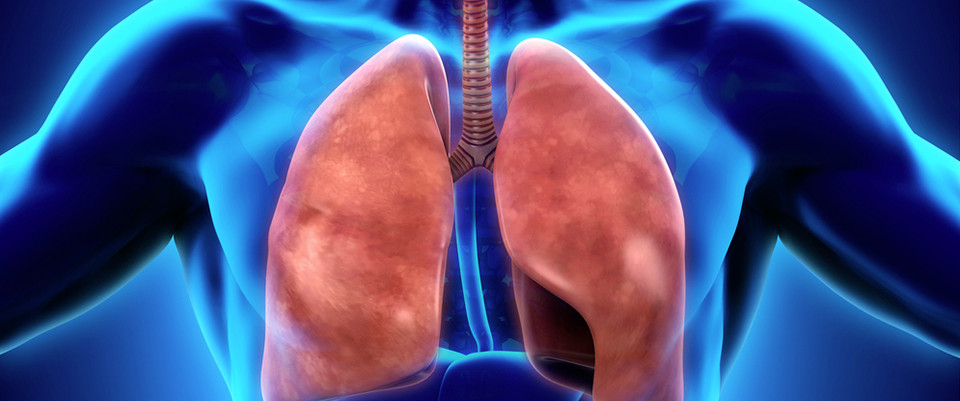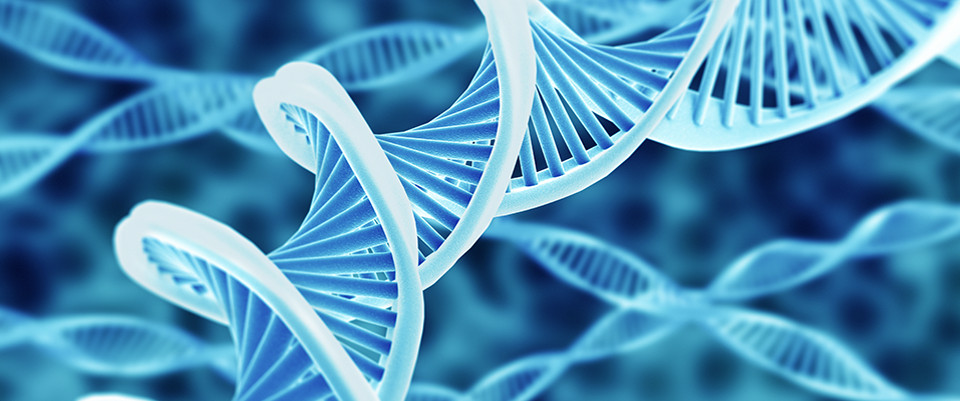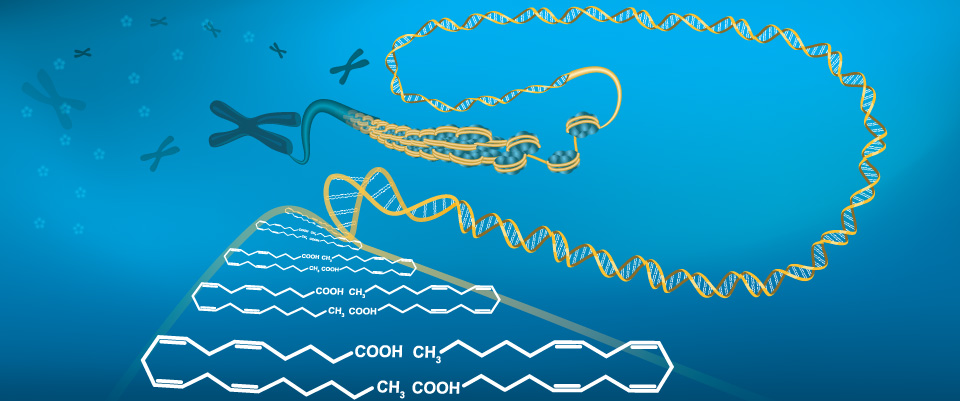PubMed
The chicken cecal microbiome alters bile acids and riboflavin metabolism that correlate with intramuscular fat content
Front Microbiol. 2024 Dec 10;15:1494139. doi: 10.3389/fmicb.2024.1494139. eCollection 2024.ABSTRACTIntramuscular fat (IMF) is a key indicator of chicken meat quality and emerging studies have indicated that the gut microbiome plays a key role in animal fat deposition. However, the potential metabolic mechanism of gut microbiota affecting chicken IMF is still unclear. Fifty-one broiler chickens were collected to identify key cecal bacteria and serum metabolites related to chicken IMF and to explore possible metabolic mechanisms. The results showed that the IMF range of breast muscle of Guizhou local chicken was 1.65 to 4.59%. The complexity and stability of ecological network of cecal microbiota in low-IMF chickens were higher than those in high-IMF chickens. Cecal bacteria positively related to IMF were Alistipes, Synergistes and Subdoligranulum, and negatively related to IMF were Eubacterium_brachy_group, unclassified_f_Lachnospiraceae, unclassified_f_Coriobacteriaceae, GCA-900066575, Faecalicoccus, and so on. Bile acids, phosphatidylethanolamine (Pe) 32:1 and other metabolites were enriched in sera of high-IMF chickens versus low-IMF chickens while riboflavin was enriched in sera of low-IMF chickens. Correlation analysis indicated that specific bacteria including Alistipes promote deposition of IMF in chickens via bile acids while the Eubacterium_brachy group, and Coriobacteriaceae promoted formation of riboflavin, glufosinate, C10-dats (tentative), and cilastatin and were not conducive to the IMF deposition.PMID:39720478 | PMC:PMC11667789 | DOI:10.3389/fmicb.2024.1494139
Protein "purity," proteoforms, and the albuminome: critical observations on proteome and systems complexity
Front Cell Dev Biol. 2024 Dec 10;12:1504098. doi: 10.3389/fcell.2024.1504098. eCollection 2024.ABSTRACTINTRODUCTION: The identification of effective, selective biomarkers and therapeutics is dependent on truly deep, comprehensive analysis of proteomes at the proteoform level.METHODS: Bovine serum albumin (BSA) isolated by two different protocols, cold ethanol fractionation and heat shock fractionation, was resolved and identified using Integrative Top-down Proteomics, the tight coupling of two-dimensional gel electrophoresis (2DE) with liquid chromatography and tandem mass spectrometry (LC-MS/MS).RESULTS AND DISCUSSION: Numerous proteoforms were identified in both "purified" samples, across a broad range of isoelectric points and molecular weights. The data highlight several concerns regarding proteome analyses using currently popular analytical approaches and what it means to (i) purify a "protein" if the isolate consists of a wide variety of proteoforms and/or co-purifying species; and (ii) use these preparations as analytical standards or therapeutics. Failure to widely recognize and accept proteome complexity has likely delayed the identification of effective biomarkers and new, more selective drug targets. iTDP is the most logical available analytical technique to effectively provide the necessary critical depth and breadth for complex proteome analyses. Routine analyses at the level of proteoforms will provide the much-needed data for the development and validation of selective biomarkers and drugs, including biologics.PMID:39720005 | PMC:PMC11666697 | DOI:10.3389/fcell.2024.1504098
The metabolomics provides insights into the Pacific abalone (Haliotis discus hannai) response to low temperature stress
Heliyon. 2024 Dec 5;10(23):e40921. doi: 10.1016/j.heliyon.2024.e40921. eCollection 2024 Dec 15.ABSTRACTThe low temperatures in winter, particularly the cold spells in recent years, have posed significant threats to China's abalone aquaculture industry. The low temperature tolerance of cultured abalone has drawn plenty of attention, but the metabolic response of abalone to low-temperature stress remains unclear. In this study, we investigated the metabolomic analysis of Pacific abalone (Haliotis discus hannai) during low-temperature stress. Pacific abalone used two strains of cultured abalone, namely the bottom-sowing cultured strain (DB) and the longline cultured strain (FS), which had different histories of low-temperature acclimation. The results revealed that eight of the top 10 shared differential expression metabolites of the two strains were carbohydrates. According to the results of the Kyoto Encyclopedia of Genes and Genomes (KEGG) metabolic pathway analysis, low-temperature stress primarily affected several metabolic pathways. These pathways include ABC transporters, carbohydrate digestion and absorption, starch and sucrose metabolism, lysine degradation, TCA cycle, the phosphotransferase system, the glucagon signaling pathway and pyruvate metabolism. The results suggest that Pacific abalone primarily regulates the expression of carbohydrates to enhance energy supply and anti-freezing protection. These findings are crucial for understanding the mechanism of low-temperature tolerance in Pacific abalone, and can help optimize culture strategies for high-quality abalone aquaculture development.PMID:39719996 | PMC:PMC11666945 | DOI:10.1016/j.heliyon.2024.e40921
Unraveling site-specific seed formation abnormalities in Picea neoveitchii Mast. trees via widely metabolomic and transcriptomic analysis
Front Plant Sci. 2024 Dec 10;15:1495784. doi: 10.3389/fpls.2024.1495784. eCollection 2024.ABSTRACTPicea neoveitchii Mast. is a rare and threatened species of evergreen coniferous tree in China, commonly facing issues such as damaged seeds, abnormal seed growth, and empty seed shells. These abnormalities vary by location; unfortunately, the reasons behind these inconsistencies are completely unknown. This study compared seeds from two 150-year-old trees located in Taibai (Shaanxi province, TB150) and Zhouqu (Gansu province, ZQ150). The results showed significant differences in 43 metabolites and hormone levels, with higher levels of indole-3-acetic acid (IAA), methyl jasmonate (MeJA), and brassinosteroid (BR) in ZQ150, which were associated with more viable seeds. In contrast, TB150 exhibited more damaged seeds and empty seed shells due to higher abscisic acid (ABA) levels. Moreover, to further investigate these inconsistencies, we performed de-novo transcriptomic assembly and functional annotation of unigenes using high-throughput sequencing. A total of 2,355 differentially expressed unigenes were identified between TB150 and ZQ150, with 1,280 upregulated and 1,075 downregulated. Hormone signaling and sugar metabolism-related unigenes were further examined for their role in seed development. ZQ150 increased the number of normal seeds by enhancing endogenous IAA levels and upregulating auxin signaling and sugar metabolism-related genes. Conversely, TB150 showed more empty seed shells, correlated with elevated ABA levels and the activation of ABA signaling genes. We hypothesize that enhanced IAA levels and the upregulation of sugar metabolism and auxin signaling genes promote normal seed development.PMID:39719938 | PMC:PMC11667104 | DOI:10.3389/fpls.2024.1495784
The effects of different hormone combinations on the growth of Panax notoginseng anther callus based on metabolome analysis
Front Plant Sci. 2024 Dec 9;15:1503931. doi: 10.3389/fpls.2024.1503931. eCollection 2024.ABSTRACTPanax notoginseng saponins (PNS), the primary active components of Panax notoginseng (Burk.) F.H.Chen, a traditional and precious Chinese medicinal herb, are mainly derived from the roots of the plant. However, due to the long cultivation period and specific environmental requirements, the PNS supply is often limited. And, callus cultures of P. notoginseng, which grow rapidly, have short production cycles, and can be cultured under controlled conditions, provide a more efficient source for the quick acquisition of saponins. In this study, anthers of P. notoginseng were used as explants, and twelve hormone combinations were tested to induce callus formation. Eight kinds of hormone combinations successfully induced P. notoginseng anther callus. Among these, callus induced by combinations 5 and 7 had the highest saponin content, while those induced by combinations 1 and 3 exhibited the highest relative growth rates. Metabolomic analysis of these four callus types revealed that there were a total of 99 differential metabolites between combinations 5 and 7, 30 between combinations 1 and 3, 123 between combinations 3 and 7, and 116 between combinations 1 and 5. Further analysis showed that the tricarboxylic acid (TCA) cycle metabolites in callus induced by combinations 1 and 3 were significantly upregulated, with corresponding genes showing high expression levels, increased ATP accumulation, and low responses of the auxin response factor PnARF-3 and cytokinin response factor PnCRF-3. The abundance of metabolites in the PNS biosynthesis pathway in callus induced by combinations 5 and 7 increased significantly, with related genes showing high expression levels, increased IPP accumulation, and high responses of PnARF-3 and PnCRF-3. Overexpression of PnARF-3 and PnCRF-3 in callus induced by combination 3 promoted the production of IPP and saponins while reducing ATP production. In conclusion, different hormone combinations affect the distribution of Acetyl-CoA through PnARF-3 and PnCRF-3, resulting in the relative growth rate and saponin of P. notoginseng anther callus differences.PMID:39719933 | PMC:PMC11667561 | DOI:10.3389/fpls.2024.1503931
Type I interferon and mitochondrial dysfunction are associated with dysregulated cytotoxic CD8+ T cell responses in juvenile systemic lupus erythematosus
Clin Exp Immunol. 2024 Dec 25:uxae127. doi: 10.1093/cei/uxae127. Online ahead of print.ABSTRACTJuvenile systemic lupus erythematosus (JSLE) is an autoimmune condition which causes significant morbidity in children and young adults and is more severe in its presentation than adult-onset SLE. While many aspects of immune dysfunction have been studied extensively in adult-onset SLE, there is limited and contradictory evidence of how cytotoxic CD8+ T cells contribute to disease pathogenesis and studies exploring cytotoxicity in JSLE are virtually non-existent. Here, we report that CD8+ T cell cytotoxic capacity is reduced in JSLE versus healthy controls, irrespective of treatment or disease activity. Transcriptomic and serum metabolomic analysis identified that this reduction in cytotoxic CD8+ T cells in JSLE was associated with upregulated type I interferon (IFN) signalling, mitochondrial dysfunction, and metabolic disturbances when compared to controls. Greater interrogation of the influence of these pathways on altered cytotoxic CD8+ T cell function demonstrated that JSLE CD8+ T cells had enlarged mitochondria and enhanced sensitivity to IFN-α leading to selective apoptosis of effector memory (EM) CD8+ T cells, which are enriched for cytotoxic mediator-expressing cells. This process ultimately contributes to the observed reduction in CD8+ T cell cytotoxicity in JSLE, reinforcing the growing evidence that mitochondrial dysfunction is a key pathogenic factor affecting multiple immune cell populations in type I IFN-driven rheumatic diseases.PMID:39719886 | DOI:10.1093/cei/uxae127
Metabolites differences between plaque biofilms of children with different levels of dental caries
Shanghai Kou Qiang Yi Xue. 2024 Oct;33(5):492-499.ABSTRACTPURPOSE: To explore the differences between plaque biofilms of children with different caries activities via metabolomics.METHODS: A case-control study was conducted to investigate the oral health-related behaviors of children in caries-free (CF), low level of early childhood caries(LECC) and high level of early childhood caries (HECC) groups and to collect supragingival plaque biofilms. Untargeted metabolomics was used to detect the compositions of plaque biofilm metabolites in three groups. Orthogonal partial least squares discriminant analysis, volcano plot and heat map were used to analyze the significant differential metabolites between groups with SPSS 26.0 software package.RESULTS: A total of 102 children aged 36 months were included in this study, including 34 children in each group. A total of 660 metabolites belonging to 11 categories were detected. There were statistical differences of 6 metabolites between LECC group and CF group, and 22 metabolites showed statistical differences between HECC group and CF group(P<0.05). Cys Cys Cys Gln, Cys Gln Cys Cys and 5-O-p-coumaroylnigrumin were the common differential metabolites between children with different levels of dental caries.CONCLUSIONS: There are differences in the compositions of plaque biofilms between children with different caries activities and healthy children. Peptides are important differential metabolites within plaque biofilms, also related to oral health.PMID:39719841
Integration of multi-omics transcriptome-wide analysis for the identification of novel therapeutic drug targets in diabetic retinopathy
J Transl Med. 2024 Dec 24;22(1):1146. doi: 10.1186/s12967-024-05856-7.ABSTRACTBACKGROUND: Diabetic retinopathy (DR) is the most important complication of Type 2 Diabetes (T2D) in eyes. Despite its prevalence, the early detection and management of DR continue to pose considerable challenges. Our research aims to elucidate potent drug targets that could facilitate the identification of DR and propel advancements in its therapeutic strategies.METHODS: A broad multi-omics exploration of DR was presented to decipher the drug targets of DR and proliferative diabetic retinopathy (PDR). Transcriptome-Wide Association Studies (TWAS), fine-mapping and conditional analysis were applied to unearth potential tissue-specific gene associations with DR. Summary Data-based Mendelian Randomization (SMR) provided secondary analysis of high confidence genes. Cis-instrument of druggable genes were extracted from the eQTLGen Consortium and PsychENCODE, facilitating drug-target MR supported by colocalization analysis. Phenome-Wide Association Studies (PheWAS) was conducted on the high confidence genes. Metabolomic and immunomic MR-profiling further augmented our research as complement.RESULTS: TWAS identified multiple robust genetic loci in both DR and PDR (WFS1, RPS26, and SRPK1) through genetic associations across different tissues. Meanwhile, we have delineated both the commonalities and discrepancies between DR and PDR at the transcriptomic level, represented by DCLRE1B as the hub gene that DR progressed into PDR. SMR revealed 92 key DR-related genes and 55 PDR-related genes. HLA-DQ family genes have a frequent occurrence, while RPS26, WFS1 and SRPK1 were validated as the genetic network's linchpins. Drug-target MR casted ERBB3 and SRPK1 as candidate effector genes for DR and PDR susceptibility. In addition, metabolomics and immunomics analyses also revealed multifaceted pathogenic factors for DR.CONCLUSIONS: Our research offers targeted therapeutic insights for early-stage DR and facilitates multi-omic comparisons of it and PDR.PMID:39719581 | DOI:10.1186/s12967-024-05856-7
Trimethylamine-N-oxide accelerates osteoporosis by PERK activation of ATF5 unfolding
Cell Mol Life Sci. 2024 Dec 24;82(1):13. doi: 10.1007/s00018-024-05501-y.ABSTRACTImbalances in gut microbiota and their metabolites have been implicated in osteoporotic disorders. Trimethylamine-n-oxide (TMAO), a metabolite of L-carnitine produced by gut microorganisms and flavin-containing monooxygenase-3, is known to accelerate tissue metabolism and remodeling; however, its role in bone loss remained unexplored. This study investigates the relationship between gut microbiota dysbiosis, TMAO production, and osteoporosis development. We further demonstrate that the loss of beneficial gut microbiota is associated with the development of murine osteoporosis and alterations in the serum metabolome, particularly affecting L-carnitine metabolism. TMAO emerges as a functional metabolite detrimental to bone homeostasis. Notably, transplantation of mouse gut microbiota counteracts obesity- or estrogen deficiency-induced TMAO overproduction and mitigates key features of osteoporosis. Mechanistically, excessive TMAO intake augments bone mass loss by inhibiting bone mineral acquisition and osteogenic differentiation. TMAO activates the PERK and ATF4-dependent disruption of endoplasmic reticulum autophagy and suppresses the folding of ATF5, hindering mitochondrial unfolding protein response (UPRmt) in osteoblasts. Importantly, UPRmt activation by nicotinamide riboside mitigates TMAO-induced inhibition of mineralized matrix biosynthesis by preserving mitochondrial oxidative phosphorylation and mitophagy. Collectively, our findings revealed that gut microbiota dysbiosis leads to TMAO overproduction, impairing ER homeostasis and UPRmt, thereby aggravating osteoblast dysfunction and development of osteoporosis. Our study elucidates the catabolic role of gut microflora-derived TMAO in bone integrity and highlights the therapeutic potential of healthy donor gut microbiota transplantation to alter the progression of osteoporosis.PMID:39719538 | DOI:10.1007/s00018-024-05501-y
Gut microbiota dysbiosis promotes cognitive impairment via bile acid metabolism in major depressive disorder
Transl Psychiatry. 2024 Dec 24;14(1):503. doi: 10.1038/s41398-024-03211-4.ABSTRACTEvidence suggests that complex interactions among the gut microbiome, metabolic abnormalities, and brain have important etiological and therapeutic implications in major depressive disorder (MDD). However, the influence of microbiome-gut-brain cross-talk on cognitive impairment in MDD remains poorly characterized. We performed serum metabolomic profiling on 104 patients with MDD and 77 healthy controls (HCs), and also performed fecal metagenomic sequencing on a subset of these individuals, including 79 MDD patients and 60 HCs. The findings were validated in a separate cohort that included 40 patients with MDD and 40 HCs using serum-targeted metabolomics. Abnormal bile acid metabolism was observed in patients with MDD, which is related to cognitive dysfunction. The following gut microbiota corresponded to changes in bile acid metabolism and enzyme activities involved in the bile acid metabolic pathway, including Lachnospiraceae (Blautia_massiliensis, Anaerostipes_hadrus, Dorea_formicigenerans, and Fusicatenibacter_saccharivorans), Ruminococcaceae (Ruminococcus_bromii, Flavonifractor_plautii, and Ruthenibacterium_lactatiformans), and Escherichia_coli. Furthermore, a combinatorial marker classifier that robustly differentiated patients with MDD from HCs was identified. In conclusion, this study provides insights into the gut-brain interactions in the cognitive phenotype of MDD, indicating a potential therapeutic strategy for MDD-associated cognitive impairment by targeting the gut microbiota and bile acid metabolism.PMID:39719433 | DOI:10.1038/s41398-024-03211-4
Analysis of biofluid metabolomic profiles to the discovery of biomarkers in age-related macular degeneration
BMJ Open Ophthalmol. 2024 Dec 24;9(1):e001573. doi: 10.1136/bmjophth-2023-001573.ABSTRACTOBJECTIVE: Age-related macular degeneration (AMD) is one of the leading causes of irreversible visual impairment and blindness in the elderly. As AMD is a multifactorial disease, it is critical to explore useful biomarkers and pathological pathways underlying it. The purpose of this study is to summarise current metabolic profiles and further identify potential metabolic biomarkers and therapeutic targets in AMD, which could facilitate clinical diagnosis and treatment.METHODS AND ANALYSIS: Relevant metabolomics studies published before 10 December 2021 were generally reviewed from online resources by two investigators. Studies with sufficient information and data were included in this systematic review and repeatedly identified metabolites were extracted. Pathway and Kyoto Encyclopaedia of Genes and Genomes (KEGG) analyses were performed. The public Gene Expression Omnibus (GEO) database was used for coanalysis with differential metabolites to construct a pathway network via MetaboAnalyst V.5.0.RESULTS: 16 studies were included in our analysis. 24 metabolites were repeatedly detected and regarded as potential biomarkers for AMD. Pathway analysis implied a major role of phenylalanine, tyrosine and tryptophan pathways in AMD pathology. 11 KEGG pathways were enriched, meanwhile, 11 metabolic pathway clusters were identified by coanalysing the differential metabolites and gene profiles using the GEO database.CONCLUSION: In this study, we summarised 16 metabolomic studies on AMD, and 24 metabolites were identified as potential biofluid biomarkers. This provided novel insights into the pathogenic mechanisms underlying AMD. Further studies are warranted to validate and expand an effective pattern for AMD diagnosis and treatment.PMID:39719382 | DOI:10.1136/bmjophth-2023-001573
From White to Reddish-Brown: The Anthocyanin Journey in <em>Stropharia rugosoannulata</em> Driven by Auxin and Genetic Regulators
J Agric Food Chem. 2024 Dec 24. doi: 10.1021/acs.jafc.4c10753. Online ahead of print.ABSTRACTStropharia rugosoannulata, or wine-cap Stropharia, is a well-known edible mushroom cultivated globally. The pileipellis color is a crucial quality attribute of S. rugosoannulata, exhibiting significant variation throughout its developmental stages. However, the pigment types and regulatory mechanisms behind color variation remain unclear. The metabolome analysis found that the anthocyanin biosynthesis pathway was significantly enriched and anthocyanins accumulated steadily in fruiting bodies during three developmental stages. The pileipellis pigment was extracted, and HPLC-MS confirmed the presence of anthocyanins. Notably, significant differences in anthocyanin content were observed among the various colored varieties. Thus, anthocyanins contribute to the pileipellis color of S. rugosoannulata. Through further investigation, this study elucidated, for the first time, the relationship between the "SrNFYA-SrDRF2" regulatory module and anthocyanin accumulation. Combined multiomics assays and HPLC analysis revealed that auxin functions as a signaling molecule that regulates the accumulation of anthocyanins in the pileipellis. Subsequently, the hub gene of anthranilate synthase for auxin synthesis was identified as SrTRP1, and the transcription factor SrMYB1 was verified as a regulator of SrTRP1, influencing auxin accumulation. These findings provide a valuable resource for the targeted enhancement of the quality of S. rugosoannulata.PMID:39719358 | DOI:10.1021/acs.jafc.4c10753
A glucan from the stems of Acanthopanax senticosus: Structure and anticolorectal cancer activity
Int J Biol Macromol. 2024 Dec 22:139113. doi: 10.1016/j.ijbiomac.2024.139113. Online ahead of print.ABSTRACTASPN-1, a novel glucan with a molecular weight of 33.31 kDa, was purified from Acanthopanax senticosus stems, characterized in structure, and evaluated for antitumor potential. The analysis of the structure of ASPN-1 revealed that it consisted of a backbone constructed from →4)-α-D-Glcp-(1 → glucosyls, branched at the O-3 position by an α-D-Glcp-(1 → residue and at the O-6 positions with α-D-Glcp-(1 → 6)-α-D-Glcp-(1 → and/or α-D-Glcp-(1 → residues. Surface morphological analysis revealed that ASPN-1 is an archetypal amorphous powder with an irregular network architecture composed of lamellar thin layers, filaments, and spherical particles. In vivo anti-tumor experiments indicated that ASPN-1 exerted inhibitory effects on CT26.WT mouse tumors by preserving immune function, elevating the production of IL-2, IFN-γ and TNF-α, and reducing production of TGF-β and IL-10. These findings indicated that ASPN-1, derived from A. senticosus, could potentially be used to treat colorectal carcinomas, acting through its immunomodulatory actions.PMID:39719239 | DOI:10.1016/j.ijbiomac.2024.139113
Comprehensive analysis of peripheral blood free amino acids in MASLD: the impact of glycine-serine-threonine metabolism
Amino Acids. 2024 Dec 24;57(1):3. doi: 10.1007/s00726-024-03433-2.ABSTRACTLittle is known about how blood free amino acids (FAAs) change in metabolic dysfunction-associated steatotic liver disease (MASLD). This study aims to identify the imbalance of FAAs in MASLD and explore its correction as a potential therapeutic target. We analyzed plasma FAAs data from 23,036 individuals with steatosis information from a biobank in Japan, and 310 patients with MASLD were enrolled. According to diagnostic criteria for steatotic liver disease (SLD) or cardiometabolic criteria (CC), we divided the subjects into five groups: MASLD, metabolic dysfunction and alcohol-associated liver disease (MetALD), CC-SLD-, CC + SLD-, and CC-SLD + . Twenty FAAs were compared among these groups and among MASLD patients with pathological information. Among the 20 FAAs, the levels of 16 FAAs increased in CC + SLD- according to the number of matches with CC items associated with insulin resistance (IR). Steatosis enhanced most of these changes but serine (Ser) and threonine (Thr) were unaffected. Glycine (Gly), Ser and Thr were significantly decreased in patients according to steatosis grade. We investigated the association between these FAAs imbalances and pathogenesis using MASLD mouse models. In mice fed a high-fat, fructose, and cholesterol (FFC) diet, metabolomics and RNA sequencing analyses indicated that abnormality in Gly, Ser, and Thr metabolism in the liver was associated with mitochondrial dysfunction and enhanced glycolysis via pyruvate. High-Gly, Ser, and Thr diet ameliorated pathogenesis of MASLD in leptin-deficient mice. Most FAAs increase due to cardiometabolic abnormalities, particularly IR. However, interventions targeting the metabolism of Gly, Ser, and Thr have the potential to improve MASLD.PMID:39718621 | DOI:10.1007/s00726-024-03433-2
Effects of typical plant growth regulator chlormequat chloride on alkaloidal compounds in Corydalis yanhusuo and molecular mechanisms
Ecotoxicol Environ Saf. 2024 Dec 22;290:117579. doi: 10.1016/j.ecoenv.2024.117579. Online ahead of print.ABSTRACTThe effects of chlormequat chloride, a typical plant growth regulator, on the medicinal herb Corydalis yanhusuo were investigated. A standardized field experiment was conducted to investigate the molecular mechanisms and variations in active compounds resulting from chlormequat chloride treatment. Samples of C. yanhusuo were collected under controlled conditions and at varying doses of chlormequat chloride. The differential compounds identified in both control and treated groups of C. yanhusuo were primarily alkaloids, as determined by non-targeted metabolomics analysis. The metabolite content was determined through the precise quantification of 12 enriched alkaloidal compounds across various categories of C. yanhusuo using targeted metabolomics. A comprehensive metabolomics evaluation method was developed that focuses on pharmacodynamically active compounds. Transcriptomic analysis also facilitates the identification of differential genes and enzymes associated with alkaloid production between the two groups. Chlormequat chloride significantly increased the yield of C. yanhusuo, but the content of the quantitatively abundant alkaloids decreased. It was suggested that the level of cytochrome P450 enzymes, primarily involved in the biosynthesis of benzylisoquinoline alkaloids, was inhibited by chlormequat chloride. In conclusion, this study revealed a dose-dependent effect of chlormequat chloride on C. yanhusuo and its associated molecular mechanisms as determined by omics analysis.PMID:39718287 | DOI:10.1016/j.ecoenv.2024.117579
Brain region and sex-dependent heterogeneity of PUFA/oxylipin profile, microglia morphology and their relationship
Prostaglandins Leukot Essent Fatty Acids. 2024 Dec 16;204:102662. doi: 10.1016/j.plefa.2024.102662. Online ahead of print.ABSTRACTLipid dyshomeostasis and neuroinflammation are key hallmarks of neuropsychiatric and neurodegenerative disorders, including major depressive disorder and Alzheimer's disease. In particular, polyunsaturated fatty acids (PUFAs) and their derivatives called oxylipins gained specific interest in this context, especially considering their capacity to orchestrate neuroinflammatory responses via direct modulation of microglia. The hippocampus and hypothalamus are crucial brain regions for regulating mood and cognition that are implicated in a variety of neuropsychiatric and neurodegenerative disorders and there is ample evidence for the sex-bias in risks for the development as well as sex-bias in the presentation of such psychiatric diseases, including the neuroinflammatory response. To better understand the local PUFA/oxylipin profiles and microglia responses in disease, we here assessed their brain region and sex-dependent profiles in homeostatic brains. In 2-month-old male and female mice, we measured non-esterified (free) PUFA/oxylipin profiles using liquid chromatography-tandem mass spectrometry and characterized microglia morphology via immunohistochemistry. The hypothalamus and hippocampus exhibit a different free PUFA/oxylipin profile, independent of sex. The hippocampus was characterized by a higher density of complex Iba1+ microglial cells than the hypothalamus, without sex effects. Hypothalamic microglial morphology correlated more strongly with free PUFA- and oxylipin species than hippocampal microglia, correlating with species from both the N-3 and N-6 PUFA metabolization pathways, while hippocampal microglial parameters correlated only with N-6 pathway-related species. Our findings provide a basis for future studies to investigate the relationship between PUFAs, their derivatives and neuroinflammation in the context of diseases.PMID:39718073 | DOI:10.1016/j.plefa.2024.102662
The Giant Polypore Mushroom Meripilus giganteus (Agaricomycetes): Promising Medicinal Applications (A Review)
Int J Med Mushrooms. 2025;27(1):1-11. doi: 10.1615/IntJMedMushrooms.2024056428.ABSTRACTMeripilus giganteus, commonly known as the giant polypore, is a significant basidiomycete fungus with notable ecological role and potential medicinal applications. Studies on this fungus have revealed its multifaceted bioactive properties, including antioxidant, antimicrobial, anticancer, immunosuppressive, and neuroprotective effects. Through the production of ligninolytic enzymes such as laccase, M. giganteus holds promise for bioremediation and biofuel production. Given these promising findings, further research is warranted, including genome sequencing, proteomic, and metabolomic approaches, to fully elucidate its bioactive pathways and maximize its biotechnological potential.PMID:39717914 | DOI:10.1615/IntJMedMushrooms.2024056428
Dual-purpose elemental sulfur for capturing and accelerating biodegradation of petroleum hydrocarbons in anaerobic environment
Water Res X. 2024 Dec 2;26:100290. doi: 10.1016/j.wroa.2024.100290. eCollection 2025 Jan 1.ABSTRACTHydrophobic organic pollutants in aqueous environments are challenging to biodegrade due to limited contact between microorganisms, the pollutants and the electron acceptor, particularly under anaerobic or anoxic conditions. Here, we propose a novel strategy that uses inexpensive, dual-function elemental sulfur (S0) to enhance biodegradation. Using petroleum hydrocarbons as the target pollutants, we demonstrated that hydrophobic and nonpolar S° can concentrate hydrocarbons while simultaneously serving as an electron acceptor to enrich hydrocarbon-degrading bacteria. The permeable reactive barrier filled with S0 effectively removed petroleum hydrocarbons. In addition to rapid adsorption, we discovered, for the first time, that petroleum hydrocarbons underwent efficient biodegradation through the reduction of S0. Specifically, n-alkanes were degraded by 80 % to 90 % and polycyclic aromatic hydrocarbons by 40 % to 95 %. These degradation rates were 17 % to 30 % and 26 % to 43 % higher, respectively, compared to those observed without S0. Consecutive subcultures combined with untargeted metabolomics analysis revealed that bacteria capable of dissimilatory sulfur reduction enhanced the fermentation process. These bacteria provided electrons to the metabolic network, which facilitated the mineralization of petroleum hydrocarbons. Our findings highlight the significant potential of S° for removing hydrophobic organic pollutants in oxygen-free environments, demonstrate the feasibility of integrating adsorption, biodegradation, and electron supply to enhance pollutant removal.PMID:39717821 | PMC:PMC11664143 | DOI:10.1016/j.wroa.2024.100290
Advance in the application of metabolomics technology in poultry
Front Vet Sci. 2024 Dec 9;11:1501630. doi: 10.3389/fvets.2024.1501630. eCollection 2024.ABSTRACTMetabolomics is a science that takes small molecular metabolites in organisms as the research object and determines the dynamic changes of metabolites at the overall level through a variety of modern analytical techniques. At present, metabolomics technology has been widely used in biological significance interpretation, food safety and quality, breeding, disease diagnosis, functional compound identification, and other fields. Its application in poultry science has also become the focus of widespread attention. With the sustainable development of analytical techniques, metabolomics has great potential in the application of poultry science. In this paper, the research progress of metabolomics in poultry growth and development, genetics and breeding, egg quality, meat quality, and disease is reviewed and concluded, which is expected to provide scientific ideas for the research of metabolomics in poultry.PMID:39717790 | PMC:PMC11663919 | DOI:10.3389/fvets.2024.1501630
Integrated metabolomics and transcriptomics analysis provides insights into biosynthesis and accumulation of flavonoids and glucosinolates in different radish varieties
Curr Res Food Sci. 2024 Nov 29;10:100938. doi: 10.1016/j.crfs.2024.100938. eCollection 2025.ABSTRACTRadish is an important vegetable worldwide, with wide medicinal functions and health benefits. The quality of radish, strongly affected by phytochemicals like flavonoids and glucosinolates, are quite different depending on the radish varieties. However, the comprehensive accumulation profiles of secondary metabolites and their molecular regulatory mechanisms in different radish cultivars remain unclear thus far. Herein, we comprehensively analyzed the secondary metabolite and gene expression profiles of the flesh and skin of four popular radish varieties with different flesh and/or skin colors, using UPLC-MS/MS-based metabolomics and transcriptomics approach combined with RT-qPCR. The results showed that altogether 352 secondary metabolites were identified in radish, of which flavonoids and phenolic acids accounted for 60.51% of the total. The flesh and skin of each variety exhibited distinct metabolic profiles, making them unique in coloration, flavor, taste, and nutritional quality. The differential metabolites were mostly enriched in flavonoid biosynthesis, flavone and flavonol biosynthesis, phenylpropanoid biosynthesis, and glucosinolate biosynthesis pathway. Further, 19 key genes regulating the differential accumulation of flavonoids among different radish varieties were identified, such as RsCHS, RsCCOAMT, RsF3H, RsFLS, RsCYP75B1, RsDFR, and RsANS that were significantly upregulated in red-colored radish tissue. Also, 10 key genes affecting the differential accumulation of glucosinolates among different varieties were identified, such as RsCYP83B1, RsSUR1, and RsST5a that were significantly increased in the skin of green radish. Moreover, systematical biosynthetic pathways of flavonoids and glucosinolates and co-expression networks between genes and metabolites were constructed based on integrative analysis between metabolomics and transcriptomics. Our findings provide a novel insight into the mechanisms of radish quality formation, thereby providing a molecular basis for breeding and cultivation of radish with excellent nutritional quality.PMID:39717680 | PMC:PMC11665663 | DOI:10.1016/j.crfs.2024.100938











